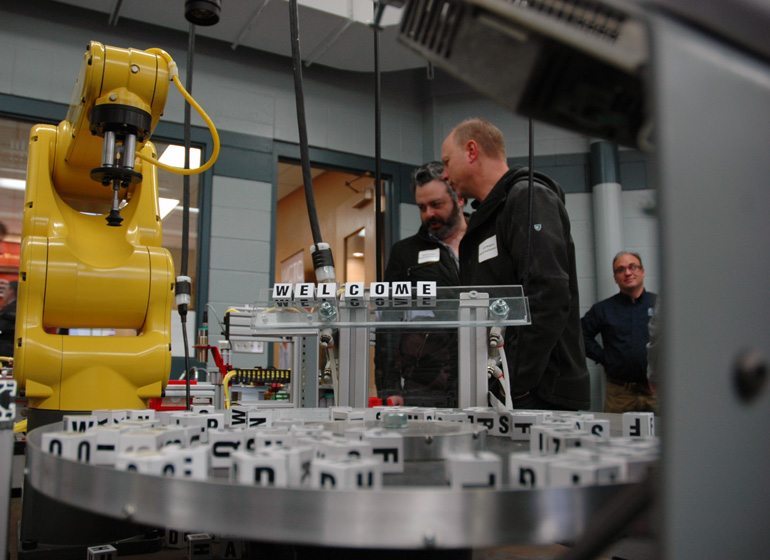Understanding where the manufacturingindustry is headed depends on the question you ask. Poll manufacturers on how their business is doing and they’ll likely be fairly optimistic, said Buckley Brinkman, executive director and chief executive officer of the Wisconsin Center for Manufacturing and Productivity.
Ask the same group what they see for the industry and the responses will be much more pessimistic, Brinkman said.

The industry is facing a number of challenges, including increasingly global competition and a fight to attract talent as older workers retire. Robotics, automation, 3-D printing and connected devices are also increasingly changing production processes.
Other forces have divided manufacturing, as those serving end markets like mining or oil and gas have struggled, while others have boomed.
Brinkman added that manufacturers in general have seen increased volatility, especially when it comes to orders. One month might be full of activity, only to have the next be quiet.
“They don’t have a lot of visibility to what’s happening longer-term,” he said
Kelly Rudy, president of Wauwatosa-based manufacturing professional development organization The Paranet Group, said there is irregularity in the industry. She pointed to a cycle in which companies have a hard time finding the help they need to meet increased demand and then aren’t able to sustain the higher level of orders because it takes too long to fill open positions.
While many of her members are expecting sales to be up or at least steady, Rudy said they are being cautious about expanding their workforce.
“A lot of people are nervous about hiring,” she said.
The volatility has also shown up in monthly jobs reports, as the nation lost more than 10,000 manufacturing jobs in three of the first six months of the year and gained more than 10,000 manufacturing jobs in two of those months. Manufacturing employment is down 24,000 through June.
Wisconsin has seen ups and downs as well, gaining 4,100 manufacturing jobs in March, only to lose 3,600 in April. The latest data available through May shows the industry is flat, with gains in durable goods offset by losses in nondurable goods.
There is reason for optimism though, as the Institute for Supply Management’s purchasing managers index reached its highest level since early 2015 in June and has been trending upward for four straight months after declining at the end of 2015.
Tim Wiora, executive director of the Wisconsin Manufacturing Extension Partnership, said he has seen companies increasingly focused on growth instead of reducing costs to improve their margins.
“There seems to be a little more positive energy over the last year-and-a-half,” Wiora said.
Rudy, Brinkman and Wiora all agreed there’s room for the state’s manufacturers to capitalize on growth in robotics, automation, 3-D printing and connected devices. A survey released in June by
Appleton-based Schenck SC found the use of robotics and 3-D printing was limited in the state, particularly among small and medium manufacturers.
“There’s still a struggle to find an ROI,” Brinkman said.
Wiora said there is increasing interest in new technology, but the Midwest is not matching the speed of adoption seen nationally. As costs continue to fall, he predicted more firms would take advantage of the new technology, much like flat screen televisions or other consumer items.
Companies looking for small opportunities to utilize new technology – maybe adding robotics to one line or automating a single operation – would be well-positioned to avoid major risks while moving forward, Brinkman said.
Rudy said price and risk are the two main factors stopping some manufacturers from adopting new technology. That’s particularly true at family-owned companies, where the technology has the potential to disrupt the workforce, she said.
For medium to large manufacturers, innovation is increasingly important, Rudy said. Many are realizing they cannot compete only on price and need to add value. Manufacturers who are doing well have put a process in place to create innovation and are okay with having some failures along the way.
The challenge is that many companies look at talent, technology and techniques in isolation, Brinkman said. As more baby boomers retire, he said, companies will have to look at all three together to survive.
“The thing that scares me about the base here in Wisconsin is a lot of manufacturers aren’t looking out past next week’s orders,” Brinkman said.


